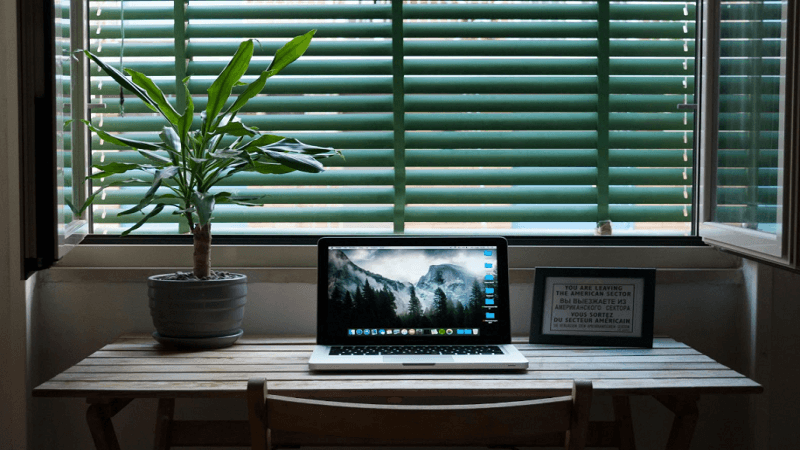In 2025, more people are choosing eco-friendly options for their homes. One big area of change is window shades. Instead of plastic or synthetic fabrics, homeowners now prefer natural materials that are better for the planet and look beautiful too. If you’re planning to update your window shades, this guide will help you pick the best natural materials that are stylish, safe, and sustainable.
Why Choose Natural Materials for Window Shades?
Before we look at the materials, let’s see why they’re a great choice.
Better for the Planet: Natural materials are eco-friendly and renewable, meaning they can grow back quickly. Unlike plastic or synthetic fabrics made from oil, they create less pollution and break down naturally instead of staying in landfills for years.
Better for Your Health: Many regular blinds are made from PVC, which can release small amounts of harmful chemicals into the air. Natural materials are chemical-free, helping keep your home’s air clean and healthy.
Timeless Beauty: Natural materials have a warm, natural look that never goes out of style. They bring the beauty of nature indoors, adding texture, calmness, and charm that plastic blinds can’t match.
Top Natural Materials for Window Shades in 2025
Let’s take a closer look at the top natural materials that are trending in 2025 and why they’re great choices for eco-conscious interiors.
1: Bamboo
Bamboo has been a popular choice for many years, and it’s still one of the best eco-friendly materials for window shades in 2025. It grows very fast, sometimes up to a meter in one day, and doesn’t need any chemicals or fertilizers to grow. Best for living rooms, dining areas, and spaces where you want a warm, organic feel.
Benefits:
- Durable and strong: Bamboo shades are long-lasting and resistant to daily wear.
- Beautiful texture: They bring an earthy, natural look that works with any décor style.
- Energy efficient: Bamboo shades can block sunlight effectively, helping maintain comfortable indoor temperatures.
- Eco-friendly: Since bamboo is a fast-growing grass, it’s one of the most renewable materials on Earth.
Suitable Window Shades:
It is often used to make bamboo shades, roman shades, and roller shades. It’s ideal for motorized options and can also be used in cellular or blackout shades for natural light control while keeping a warm, organic look.
2: Woven Wood
Woven wood shades are made from natural materials like grass, reeds, and jute. They have a nice, natural look and are a great choice for people who want something stylish and eco-friendly. Best for bedrooms or sunrooms where you want filtered light and a calming atmosphere.
Benefits:
- Unique texture: Each shade is naturally different.
- Filtered light: Allows soft sunlight to enter while maintaining privacy.
- Sustainable: Many are made from responsibly sourced materials.
Suitable Window Shades:
Woven wood fibers are popular for roman and skylight window shades. They work well as sheer or double roller shades, letting in soft light while maintaining privacy and natural texture.
3: Linen
Linen is made from the flax plant, which requires very little water and minimal chemicals to grow. It’s one of the most sustainable fabrics available and is loved for its timeless, elegant appearance. Best for minimalist or Scandinavian-style homes where simplicity and texture matter.
Benefits:
- Soft and natural look: Linen shades bring a relaxed and airy vibe to interiors.
- Breathable: Linen allows good airflow, keeping your space comfortable.
- Biodegradable: 100% natural linen will break down naturally over time.
Suitable Window Shades:
Linen can be crafted into roman shades, roller shades, or zebra window shades. It’s also used in thermal and blackout options, offering a soft, breathable texture that adds elegance to any room.
4: Cotton
Cotton is a popular choice because it’s soft, easy to use, and widely available. In 2025, organic cotton is becoming more common as more brands use chemical-free farming. Best for: bedrooms, nurseries, or any space that benefits from a soft, homely touch.
Benefits:
- Soft and comfortable: Cotton shades add warmth and comfort to any room.
- Variety: Available in many colors, patterns, and weaves.
- Eco-friendly options: Organic cotton is free from synthetic dyes and pesticides.
Suitable Window Shades:
Cotton is versatile and can be made into roman shades, cellular shades, roller shades, and double roller window shades. It works beautifully in sheer and blackout versions, giving a cozy, soft touch to interiors.
5: Grasscloth
Grasscloth window coverings are made from woven natural grasses, reeds, or hemp fibers. They add a unique texture and luxury feel that synthetic materials can’t replicate. Best for formal living spaces or areas where you want a touch of sophistication.
Benefits:
- Unique pattern: Each roll of grasscloth has a one-of-a-kind texture.
- Eco-friendly: Made from renewable grasses and plant fibers.
- Premium look: Often used in high-end eco-luxury interiors.
Suitable Window Shades:
It works well for roman shades, roller shades, and sheer window shades. It is often layered or combined with thermal and blackout liners, giving a luxurious, eco-friendly look to formal living areas.
Tips for Choosing Natural Window Shades
When choosing natural shades, keep these simple tips in mind:
- If you want more privacy, go for thicker weaves like bamboo or jute. For softer light, linen or woven wood shades work beautifully.
- Look for certifications like OEKO-TEX, FSC, or Global Organic Textile Standard (GOTS) to ensure your shades are truly eco-friendly.
- Natural fibers can be sensitive to moisture, so avoid installing them in very humid areas like bathrooms. Regular dusting and occasional vacuuming will help keep them clean.
- Bamboo and woven wood shades fit perfectly in rustic or tropical homes, while linen and cotton are better for modern or minimalist interiors.
Final Thoughts
Natural materials for window shades bring warmth, texture, and harmony to any room. Bamboo, linen, cotton, jute, and woven wood are leading the way in 2025, offering both beauty and sustainability.
So, when you’re ready to refresh your interiors, skip the plastics and synthetics, go green instead. Your home (and the planet) will thank you.

